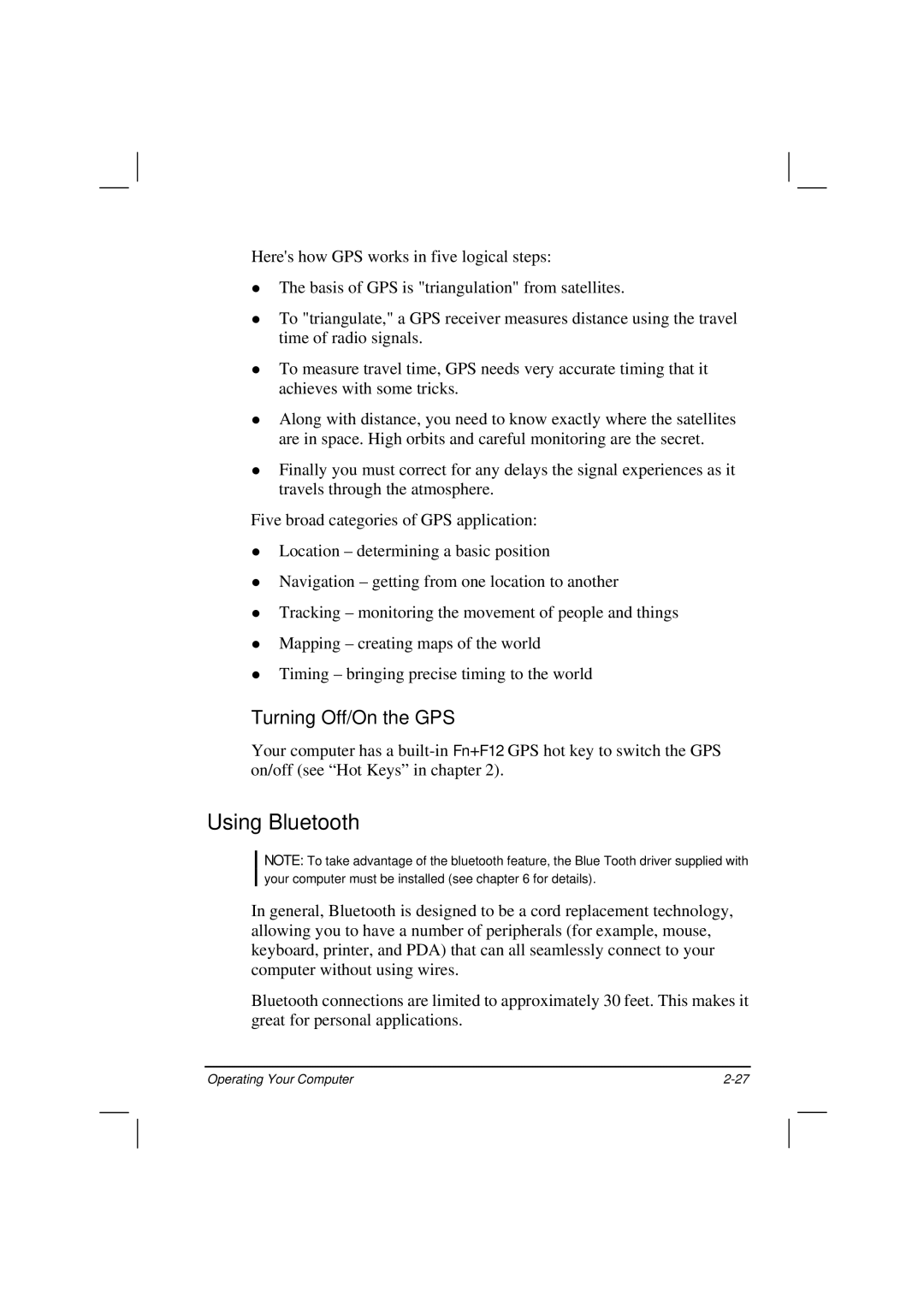
Here's how GPS works in five logical steps:
The basis of GPS is "triangulation" from satellites.
To "triangulate," a GPS receiver measures distance using the travel time of radio signals.
To measure travel time, GPS needs very accurate timing that it achieves with some tricks.
Along with distance, you need to know exactly where the satellites are in space. High orbits and careful monitoring are the secret.
Finally you must correct for any delays the signal experiences as it travels through the atmosphere.
Five broad categories of GPS application:
Location – determining a basic position
Navigation – getting from one location to another
Tracking – monitoring the movement of people and things
Mapping – creating maps of the world
Timing – bringing precise timing to the world
Turning Off/On the GPS
Your computer has a
Using Bluetooth
NOTE: To take advantage of the bluetooth feature, the Blue Tooth driver supplied with your computer must be installed (see chapter 6 for details).
In general, Bluetooth is designed to be a cord replacement technology, allowing you to have a number of peripherals (for example, mouse, keyboard, printer, and PDA) that can all seamlessly connect to your computer without using wires.
Bluetooth connections are limited to approximately 30 feet. This makes it great for personal applications.
Operating Your Computer |
